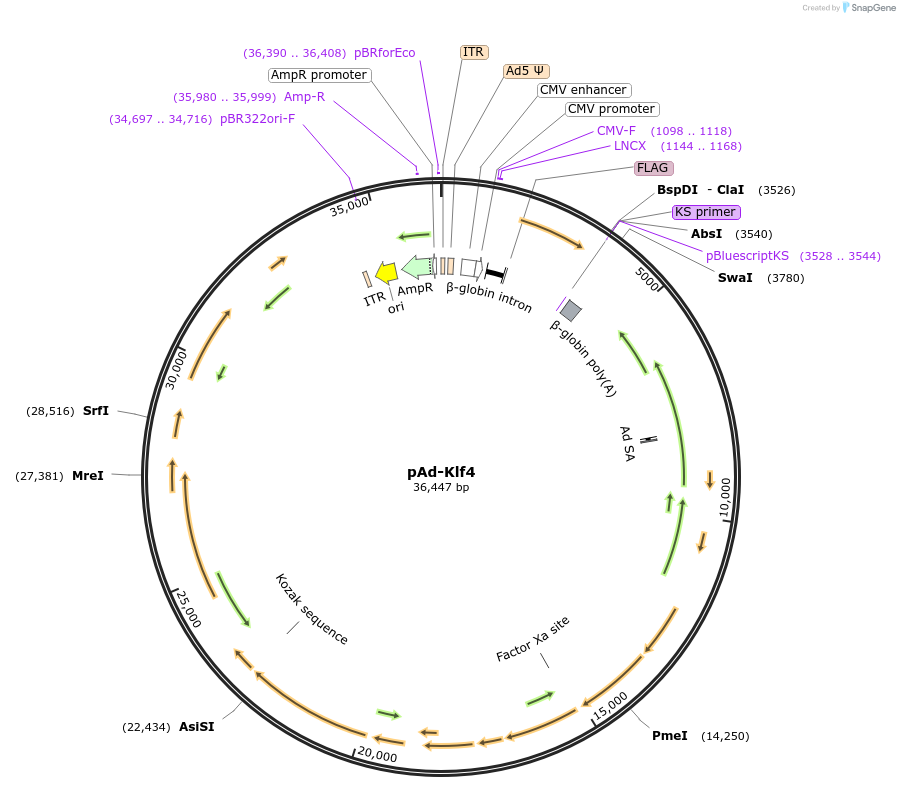-
Depositing Lab
-
Sequence Information
Ordering
| Item | Catalog # | Description | Quantity | Price (USD) | |
|---|---|---|---|---|---|
| Plasmid | 19770 | Standard format: Plasmid sent in bacteria as agar stab | 1 | $89 | |
Backbone
-
Vector backbonepAd-ClaI
- Backbone size w/o insert (bp) 32900
-
Vector typeMammalian Expression, Adenoviral
Growth in Bacteria
-
Bacterial Resistance(s)Ampicillin, 100 μg/mL
-
Growth Temperature37°C
-
Growth Strain(s)DH5alpha
-
Growth instructionsStbl3
-
Copy numberLow Copy
Gene/Insert
-
Gene/Insert nameKlf4
-
SpeciesM. musculus (mouse)
-
Insert Size (bp)3800
-
Entrez GeneKlf4 (a.k.a. EZF, Gklf, Zie)
-
Tag
/ Fusion Protein
- FLAG (N terminal on insert)
Cloning Information
- Cloning method Restriction Enzyme
- 5′ cloning site MfeI (unknown if destroyed)
- 3′ cloning site PacI (unknown if destroyed)
- 5′ sequencing primer CMV-F
- (Common Sequencing Primers)
Resource Information
-
Addgene Notes
-
Articles Citing this Plasmid
Terms and Licenses
-
Academic/Nonprofit Terms
-
Industry Terms
- Not Available to Industry
Trademarks:
- Zeocin® is an InvivoGen trademark.
Depositor Comments
From article: For the cloning of adenoviral vectors, EcoRI fragments containing the respective cDNAs
for c-myc (constitutively active human T58A variant), Klf4, Oct4 and Sox2 were
integrated into the EcoRI site of pHIHG-Ad2. A fragment containing the cDNA sequence
was isolated from the resulting plasmids by MfeI/PacI digestion and used for
electroporation of BJ5183 cells together with linearized vector pAd-ClaI. Correct clones
were identified by HindIII digestion.
These plasmids were created by your colleagues. Please acknowledge the Principal Investigator, cite the article in which the plasmids were described, and include Addgene in the Materials and Methods of your future publications.
-
For your Materials & Methods section:
pAd-Klf4 was a gift from Konrad Hochedlinger (Addgene plasmid # 19770 ; http://n2t.net/addgene:19770 ; RRID:Addgene_19770) -
For your References section:
Induced pluripotent stem cells generated without viral integration. Stadtfeld M, Nagaya M, Utikal J, Weir G, Hochedlinger K. Science. 2008 Nov 7;322(5903):945-9. doi: 10.1126/science.1162494. Epub 2008 Sep 25. 10.1126/science.1162494 PubMed 18818365







